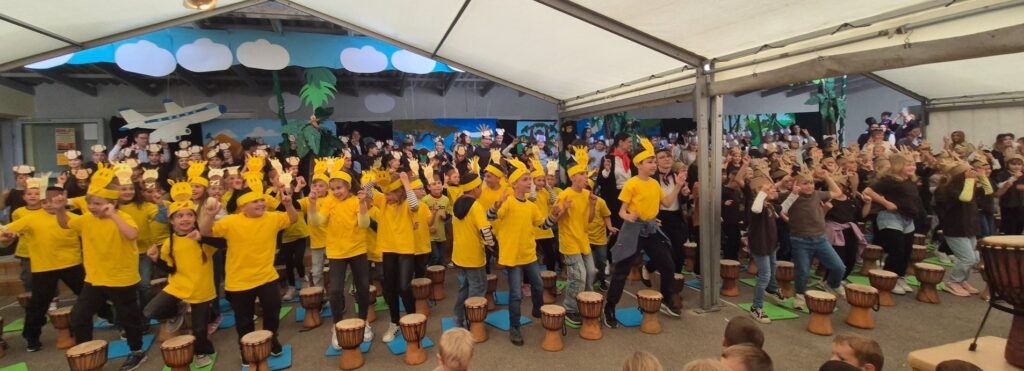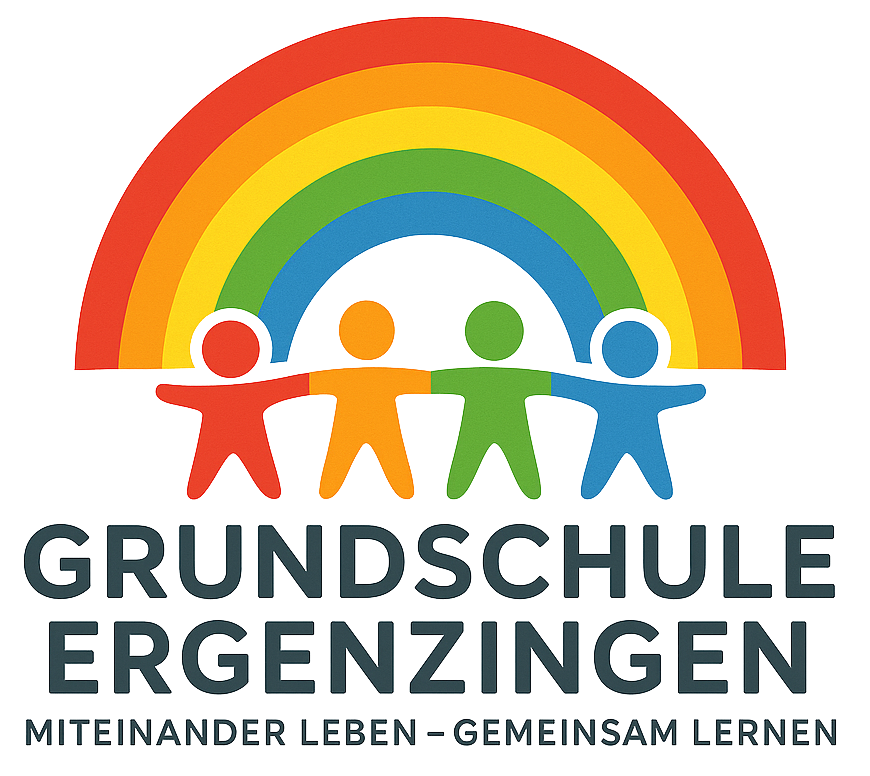
Schulfest der Grundschule Ergenzingen 2025
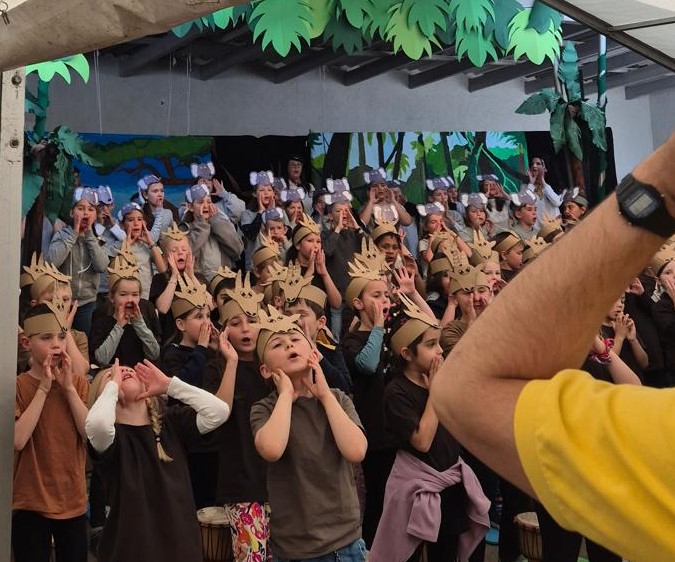
Trommelzauber „Tambo Tambo“ – eine Reise nach Tamborena
Das diesjährige Schulfest der Grundschule stand unter dem großen Motto des „Trommelzaubers“. Im Laufe der Projektwoche im Mai wurde unter der Leitung von Eddy Yildiztekin (Team Trommelzauber) aus der ganzen Grundschule eine trommelnde, tanzende und singende Gemeinschaft.
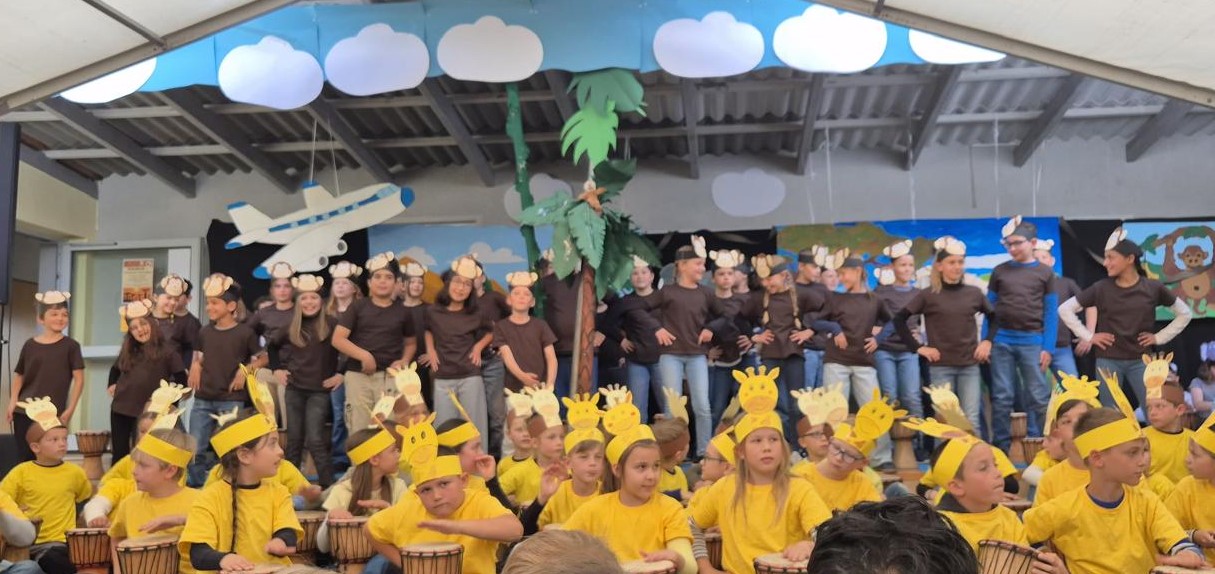
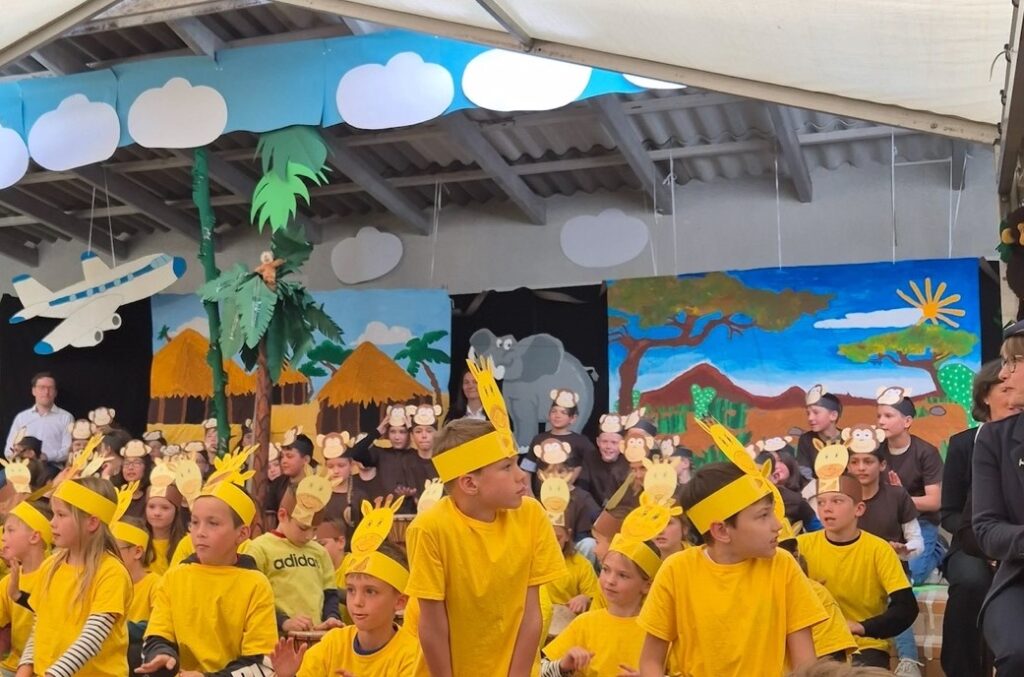

Morgens gab es einen gemeinsamen Trommelgruß mit allen Klassen. Anschließend fanden die Trommel-Proben. Hier wurden mit den einzelnen Jahrgängen Tänze und Lieder entwickelt statt. Neben dem Musizieren gab es täglich Raum für Bastel- und Kreativzeiten zum Thema „Afrika“. Dabei entstanden verschiedene Ausstellungsstücke, sowie ein beeindruckendes Bühnenbild, welches bei der Abschlussaufführung zu bestaunen war.
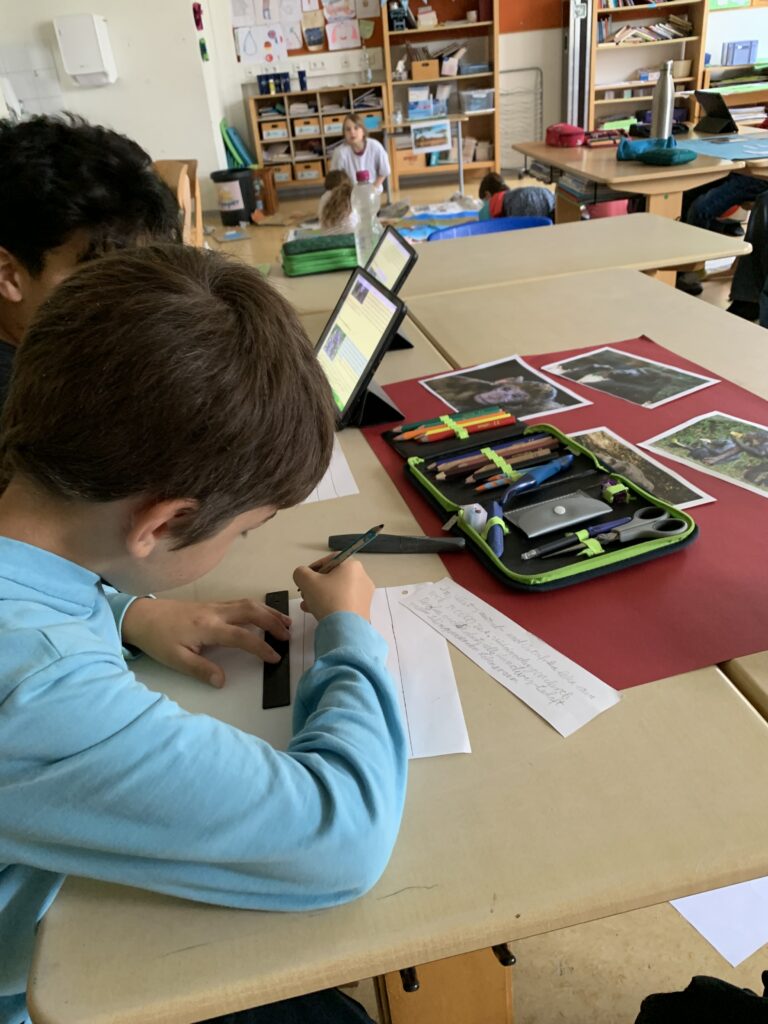
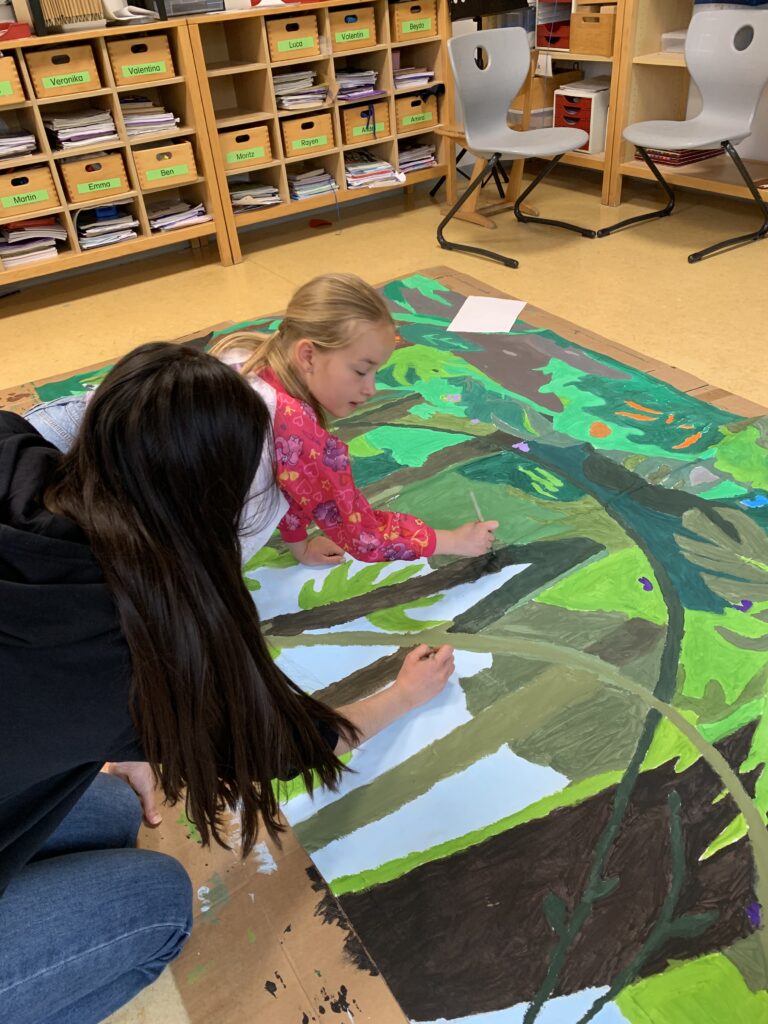
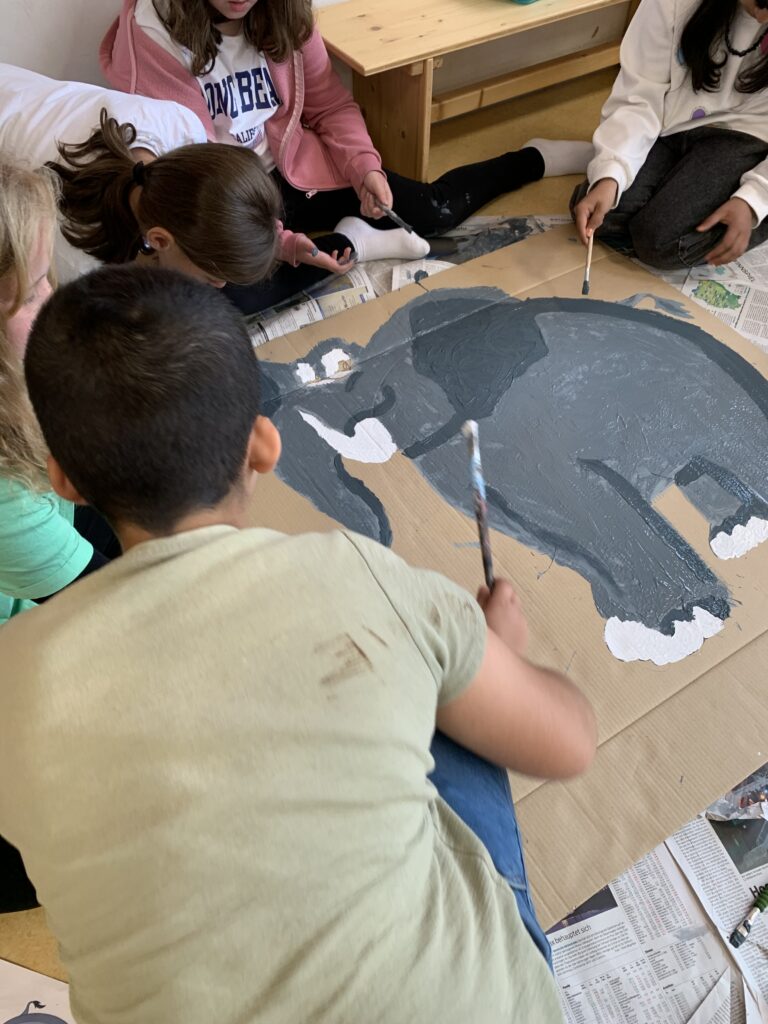
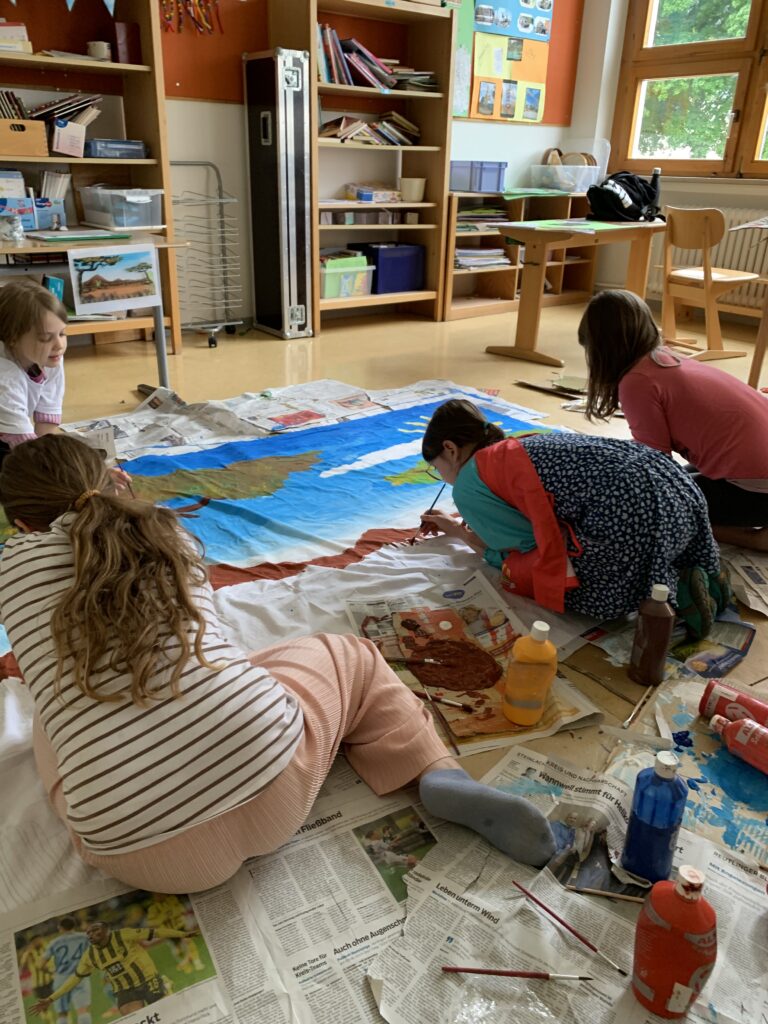
Die Projektwoche mündete am Freitagnachmittag in einem großen Schulfest.
Im Festzelt auf dem Pausenhof wurde das Stück „Tambo Tambo“ mit über 200 Trommeln, Tanz und Gesang von der gesamten Schulgemeinschaft aufgeführt. Unsere Darbietung nahm die Zuschauer mit auf eine musikalische Reise in das Trommeldorf Tamborena. Die Flugtickets wurden von Eddy, unserem Piloten, „bezahlt“ und somit stand der Reise nichts im Wege. Die Kinder wurden zu Tieren, die Lehrerschaft zu Flugbegleitern und am Ende feierten wir gemeinsam mit den Zuschauern das Fest im Dorf Tamborena.
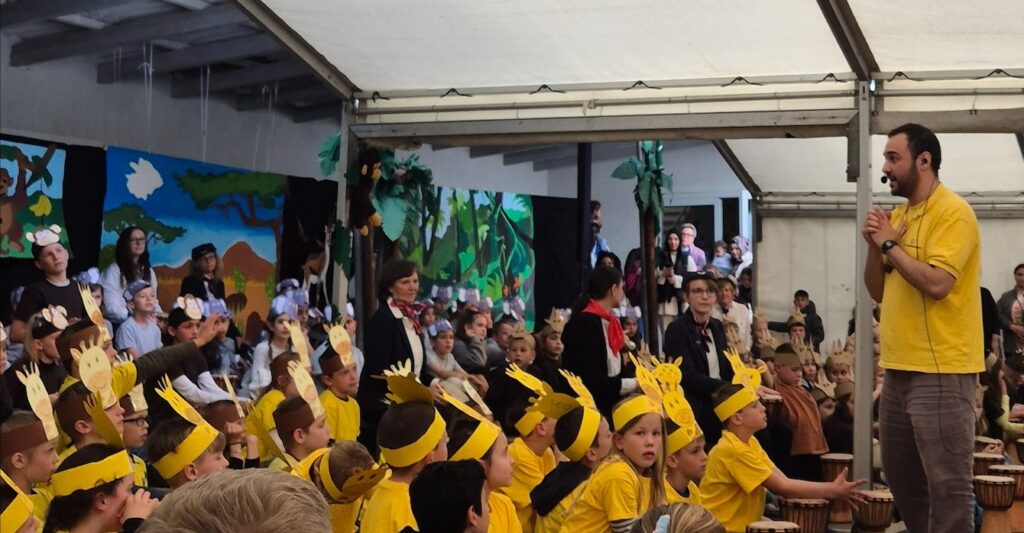
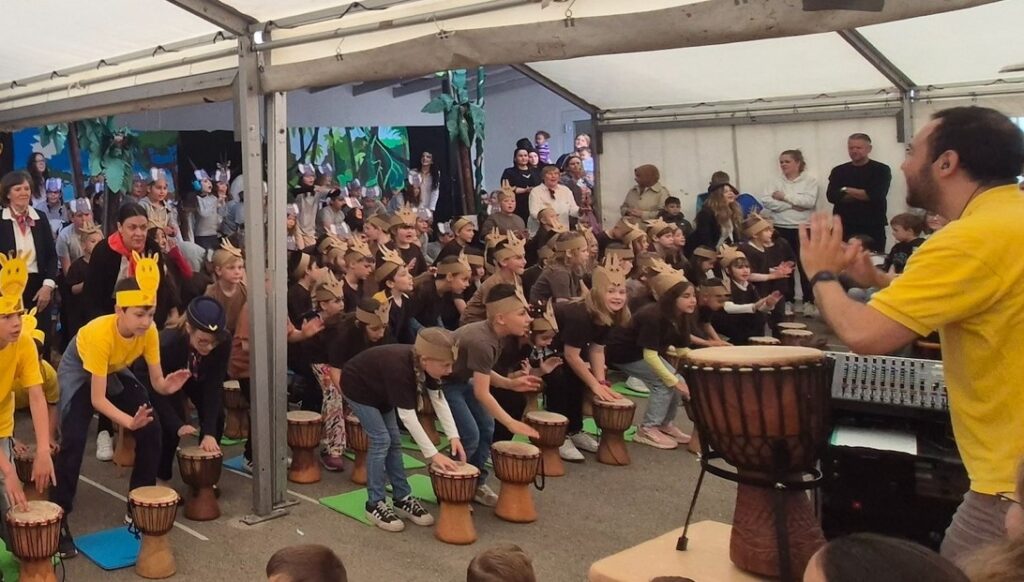

Für das leibliche Wohl sorgte der Elternbeirat und die Elternschaft. An verschiedenen Ständen konnte man Getränke, Kuchen und herzhafte Speisen genießen, die bei allen Gästen gut ankamen.
Auch für die Kinder gab es ein tolles Angebot: Auf dem Hof lud eine riesige Hüpfburg zum Toben ein und unser Betreuungsteam von Mokka organisierte eine abwechslungsreiche Spielstraße mit verschiedenen Stationen. Die Kinder waren mit Begeisterung dabei.
Wir möchten uns Recht herzlich bei allen Beteiligten und Sponsoren, die mit viel Engagement und Unterstützung das Schulfest zu etwas ganz Besonderem gemacht haben, bedanken.
